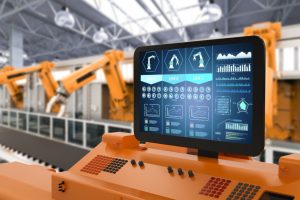When it comes to personal computing, All-In-One (AIO) computers have carved out their own niche. These sleek devices combine the CPU and monitor into a single, space-saving unit. While AIO computers offer various advantages, they also come with their fair share of drawbacks. Let’s explore the pros and cons of All-In-One computers to help you decide if they’re the right choice for your computing needs.
Pros
Let’s take a look at the pros of AIO computers:
- Space Efficiency:
All-in-one computers are champions of space efficiency. With no separate tower or multiple cables cluttering your workspace, they’re ideal for small offices, dorm rooms, or any place with limited space. Their minimalist design can make your desk look cleaner and more organized.
- Aesthetics:
AIOs are often appreciated for their sleek and modern appearance. They are designed to be visually appealing, with slim profiles and minimalistic bezels. These computers can add a touch of sophistication to your workspace, making them popular among design-conscious users.
- Easy Setup:
Setting up an AIO computer is a breeze. You just need to plug in the power cord and connect a keyboard and mouse. There’s no need to deal with a tangle of cables, making it a convenient choice for those who want a hassle-free setup.
- Reduced Cable Clutter:
With an AIO, you don’t have to worry about the unsightly mess of cables you typically find behind a traditional desktop computer. This clean look is especially appealing if you value a tidy and organized workspace.
- Portability:
AIOs are relatively easy to move around compared to traditional desktops. If you need to change your workspace or take your computer to a different room, you can do so without the hassle of disconnecting and reconnecting numerous components.
- Space for Built-in Speakers:
AIOs often come with built-in speakers, offering better audio quality compared to traditional monitors. This can be a bonus if you use your computer for entertainment purposes, like watching movies or playing video games.
- Touchscreen Options:
Many AIOs come with touchscreen capabilities. This feature is particularly useful for creative professionals, as it allows for more intuitive interaction with design software.
Cons
Let’s take a look at the cons of AIO computers:
- Limited Upgradability:
A significant drawback of AIO computers is their limited upgradability. Traditional desktops allow you to swap out components like the graphics card, CPU, or storage. AIOs, on the other hand, have most components integrated into the monitor, making upgrades challenging or impossible. This means your computer may become outdated sooner than you’d like.
- Performance Constraints:
AIOs often have performance limitations compared to traditional desktops. These constraints result from their smaller form factor, which restricts the use of high-end components. Gamers, content creators, or those needing substantial computing power may find AIOs lacking.
- Higher Cost:
AIO computers tend to be more expensive than building a custom desktop with equivalent performance. The convenience and aesthetics of an AIO come at a premium, making them less budget-friendly.
- Display Quality:
While AIOs offer good displays, the quality may not match that of standalone monitors. For tasks like professional graphic design or video editing, users might prefer a high-quality external monitor, which AIOs often can’t match in terms of color accuracy and resolution.
- Port Accessibility:
The placement of ports on AIOs can sometimes be inconvenient. With all components integrated into the display, accessing ports may require you to reach around the back or sides, which can be frustrating.
- Lack of Ergonomic Flexibility:
AIOs may have limited ergonomic adjustability compared to standalone monitors and desktops. You can’t easily change the monitor’s height or angle, which can affect your comfort during extended use.
- Risk of Obsolescence:
As technology advances, AIOs may become outdated more quickly due to their limited upgradability. Users who want their computers to keep up with the latest advancements may find this limitation frustrating.
Whether an AIO computer is the right choice for you depends on your specific needs and priorities. If space efficiency, aesthetics, and easy setup are significant factors, an AIO could be an excellent choice. However, if you require high performance, upgradability, or cost-effectiveness, you may be better off with a traditional desktop.





